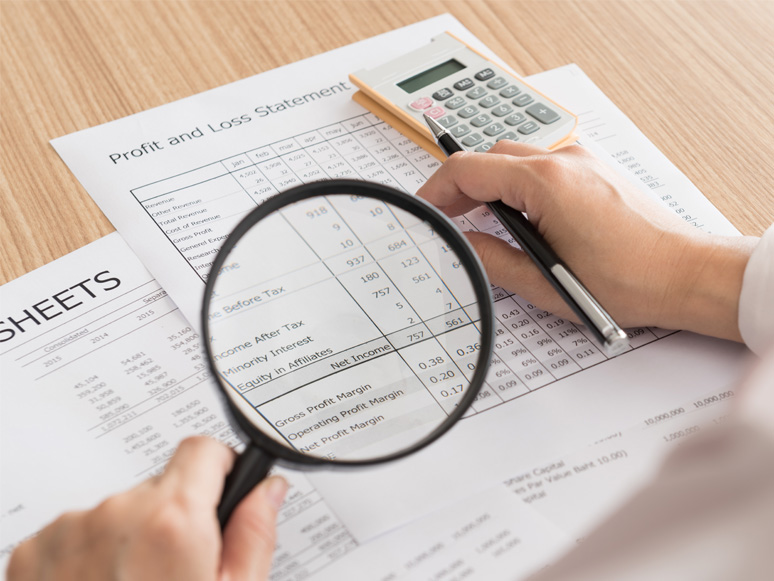logo


01st Jul, 2021

The Federal Government has announced a temporary COVID Disaster Payment to assist workers who live or work in a Commonwealth declared hotspot, who are unable to attend work and earn an income as a result of state-imposed health restrictions that last for longer than one week.
The payment, available for Australian citizens, permanent residents and eligible working visa holders, is up to $500 per week for recipients who lose 20 hours or more of work, and $325 per week those who lose under 20 hours of work.
Access to the payment is available through Services Australia from 8 June 2021.
01st Jul, 2021

Businesses that have accessed government economic stimulus measures need to take extra care this tax time. The ATO has announced that it will increase its scrutiny, conducting compliance activity on various economic stimulus measures introduced to help businesses recover from the effects of COVID-19.
These stimulus measures include loss carry-back, temporary full expensing and accelerated depreciation.
While the ATO will continue to support businesses, most of whom are doing the right thing, it is looking at behaviour or development of schemes designed to deliberately exploit various stimulus measures. All taxpayers who’ve used the schemes should review their claims to ensure they are eligible, and that the amounts claimed are correct.
The loss carry-back measure allows eligible corporate entities to claim a refundable tax offset in their 2020– 2021 and 2021–2022 company tax returns. In essence, companies get to “carry back” losses to earlier years in which there were income tax liabilities, which may result in a cash refund or a reduced tax liability.
The temporary full expensing measure allows immediately deducting the business portion of the cost of eligible new depreciating assets or improvements. Eligible businesses also have access to the accelerated depreciation measure for the 2019–2020 and 2020–2021 income years, in which the cost of new depreciating assets can be deducted at an accelerated rate.
The ATO will review claims as part of its tax time compliance activities as well as actively identifying tax schemes and arrangements seeking to exploit those schemes. The ATO will actively pursue concerning or fraudulent behaviours, including imposing financial penalties, prosecution and imprisonment for the most serious of cases.
20th May, 2021

The Government will extend the temporary full expensing measure until 30 June 2023. It was otherwise due to finish on 30 June 2022.
Other than the extended date, all other elements of temporary full expensing will remain unchanged.
Currently, temporary full expensing allows eligible businesses to deduct the full cost of eligible depreciating assets, as well as the full amount of the second element of cost. A business qualifies for temporary full expensing if it is a small business (annual aggregated turnover under $10 million) or has an annual aggregated turnover under $5 billion. Annual aggregated turnover is generally worked out on the same basis as for small businesses, except that the threshold is $5 billion instead of $10 million.
There is an alternative test, so a corporate tax entity qualifies for temporary full expensing if:
If temporary full expensing applies to work out the decline in value of a depreciating asset, no other method of working out that decline in value applies.
Assets must be acquired from 7:30pm AEDT on 6 October 2020 and first used or installed ready for use by 30 June 2023.
Under the temporary, COVID-driven restoration of the loss carry-back provisions announced in the previous Budget, an eligible company (aggregated annual turnover of up to $5 billion) could carry back a tax loss for the 2019–2020, 2020–2021 or 2021–2022 income years to offset tax paid in the 2018–2019 or later income years.
The Government has announced it will extend this to include the 2022–2023 income year. Tax refunds resulting from loss carry-back will be available to companies when they lodge their 2020–2021, 2021–2022 and now 2022–2023 tax returns.
This is intended to help increase cash flow for businesses in future years and support companies that were profitable and paying tax but find themselves in a loss position as a result of the COVID-19 pandemic. Temporary loss carry-back also complements the temporary full expensing measure by allowing more companies to take advantage of expensing, while it is available.
The Government will remove the cessation of employment as a taxing point for tax-deferred employee share schemes (ESSs). There are also other changes designed to cut “red tape” for certain employers.
Cessation of employment change
Currently, under a tax-deferred ESS and where certain criteria are met, employees may defer tax until a later tax year (the deferred taxing point). In such cases, the deferred taxing point is the earliest of:
The change announced in the latest Budget will result in tax being deferred until the earliest of the remaining taxing points.
Other regulatory changes
The Government will also:
30th Apr, 2021

A number of important COVID-19 related government stimulus and support measures are now coming to an end, and some others have begun phasing out, which will occur over a slightly longer period.
This means that businesses and individuals need to prepare for an environment where the government safety net is not as wide.
The following are, at the time of writing, among the measures that will cease at the end of March 2021:
19th Mar, 2021

With insecure, contract and casual work becoming increasingly common, particularly in the current COVID-19 affected economy, it’s no surprise that many young and not-so-young Australians may have income from more than one job. If you are working two or more jobs casually or have overlapping contract work, you need to be careful to avoid an unexpected end of financial year tax debt.
This type of debt usually arises where a person with more than one job claims the tax-free threshold in relation to multiple employers, resulting in too little tax being withheld overall. To avoid that, you need to look carefully at how much you’ll be making and adjust the pay as you go (PAYG) tax withheld accordingly.
Currently, the tax-free threshold is $18,200, which means that if you’re an Australian resident for tax purposes, the first $18,200 of your yearly income isn’t subject to tax. This works out to roughly $350 a week, $700 a fortnight, or $1,517 per month in pay.
When you start a job, your employer will give you a tax file number declaration form to complete. This will ask whether you want to claim the tax-free threshold on the income you get from this job, to reduce the amount of tax withheld from your pay during the year.
A problem arises, of course, when a person has two or more employers paying them a wage, and they claim the tax-free threshold for multiple employers. The total tax withheld from their wages may then not be enough to cover their tax liability at the end of the income year. This also applies to people who have a regular part-time job and also receive a taxable pension or government allowance.
The ATO recommends that people who have more than one employer/payer at the same time should only claim the tax-free threshold from the employer who usually pays the highest salary or wage. The other payers will then withhold tax from your payments at a higher rate (the “no tax-free threshold” rate).
If the total tax withheld from of your employer payments is more than needed to meet your year-end tax liability, the withheld amounts will be credited to you when your income tax return is lodged, and you’ll get a tax refund. However, if the tax withheld doesn’t cover the tax you need to pay, you’ll have a tax debt and need to make a payment to the ATO.
19th Mar, 2021

The ATO is kicking into gear in 2021 with another two data-matching programs specifically related to the JobMaker Hiring Credit and early access to superannuation related to COVID-19. While the data collected will mostly be used to identify compliance issues in relation to JobMaker and early access to super, it will also be used to identify compliance issues surrounding other COVID-19 economic stimulus measures, including JobKeeper payments and cash flow boosts.
As a refresher, the temporary early access to super measure allowed citizens or permanent residents of Australian or New Zealand to withdraw up to two amounts of $10,000 from their super in order to deal with adverse economic effects caused by the COVID-19 pandemic. The JobMaker Hiring Credit is a payment scheme for businesses that hire additional workers. Both measures have particular eligibility conditions to meet for access.
The ATO expects that data relating to more than three million individuals will be collected from Services Australia (Centrelink) for the temporary early access to super program, as well as data about around 450,000 positions related to JobMaker. Approximately 100,000 individuals’ data will also be collected from the state and territory correctional facility regulators.
While the data collected will primarily be used to verify application, registration and lodgment obligations as well as identify compliance issues and initiate compliance activities, the ATO will also use it to improve voluntary compliance, and to ensure that the COVID-19 economic response is providing timely support to affected workers, businesses and the broader community.